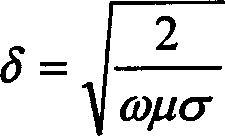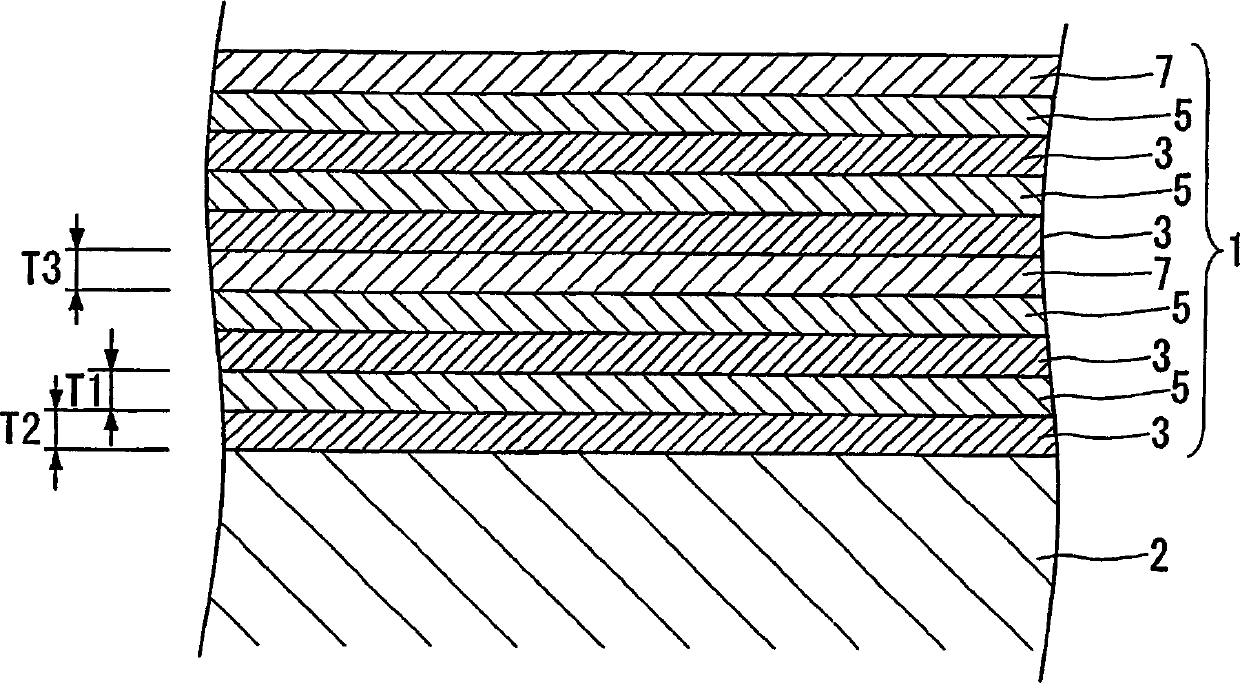Magnetic thin film, composite magnetic thin film for high frequency and magnetic device using the same
A magnetic thin film and composite magnetic technology, applied in the direction of magnetic thin film, magnetic layer, electrical components, etc., can solve the problems of insufficient specific resistance, increased high-frequency loss, difficulty in applying high-frequency inductors, etc.
- Summary
- Abstract
- Description
- Claims
- Application Information
AI Technical Summary
Problems solved by technology
Method used
Image
Examples
Embodiment 1
[0126] The high-frequency magnetic thin film of the present invention was produced according to the following film-forming method.
[0127] (film forming process)
[0128] 100nm thick SiO will be deposited on the Si wafer 2 The material of the film is used as the substrate.
[0129] Using a multi-target sputtering device, a magnetic thin film for high frequency is deposited on a substrate in the following manner. That is to say, the interior of the multi-target sputtering device was pre-evacuated up to 8×10 -5 After Pa, Ar gas was introduced to make the pressure 10 Pa, and a 100 W RF power source was used to sputter etch the substrate surface for 10 minutes.
[0130] Subsequently, the flow rate of Ar gas was adjusted so that the pressure was 0.4Pa, and the Co 87 Zr 5 Nb 8 target, composite target with C (carbon) particles on the Fe target, and Al on the FeCo target 2 o 3 (aluminum oxide) composite target, and deposited (deposited) a composite magnetic thin film as a hi...
Embodiment 2
[0138] (film formation cycle)
[0139] After depositing a CoZrNb layer with a film thickness of 1.5 nm as the first layer on the substrate, an Fe-C layer with a film thickness of 1.5 nm was formed thereon as the second layer, and this film formation cycle was repeated three times. Next, a FeCoAlO layer having a film thickness of 1.0 nm was deposited on the sixth layer. As above, when three layers of CoZrNb layers and Fe-C layers are stacked alternately, one layer of FeCoAlO layer is deposited, and such a cycle of film-forming treatment is cycled 50 times to obtain a magnetic film with a magnetic film composition as shown in Figure 12. Composite magnetic film (Example 2) (total thickness: 500 nm). In addition, the process flow of film formation is the same as that of the above-mentioned embodiment 1.
Embodiment 3
[0141] (film formation cycle)
[0142] After depositing a CoZrNb layer with a film thickness of 20.0 nm as the first layer on the substrate, an Fe-C layer with a thickness of 5.0 nm was formed thereon as the second layer. Then, a 2.0 nm layer of FeCoAlO was deposited on the Fe-C layer. As above, each layer of CoZrNb layer, Fe-C layer and FeCoAlO layer is alternately deposited, and such a cycle of film-forming treatment is cycled 18 times to obtain a composite magnetic film having the magnetic film composition shown in FIG. 12 (implementation) Example 3) (total thickness: 486 nm). In addition, the process flow of film formation is the same as that of the above-mentioned embodiment 1.
PUM
| Property | Measurement | Unit |
|---|---|---|
| thickness | aaaaa | aaaaa |
| thickness | aaaaa | aaaaa |
| thickness | aaaaa | aaaaa |
Abstract
Description
Claims
Application Information
 Login to View More
Login to View More - R&D
- Intellectual Property
- Life Sciences
- Materials
- Tech Scout
- Unparalleled Data Quality
- Higher Quality Content
- 60% Fewer Hallucinations
Browse by: Latest US Patents, China's latest patents, Technical Efficacy Thesaurus, Application Domain, Technology Topic, Popular Technical Reports.
© 2025 PatSnap. All rights reserved.Legal|Privacy policy|Modern Slavery Act Transparency Statement|Sitemap|About US| Contact US: help@patsnap.com



